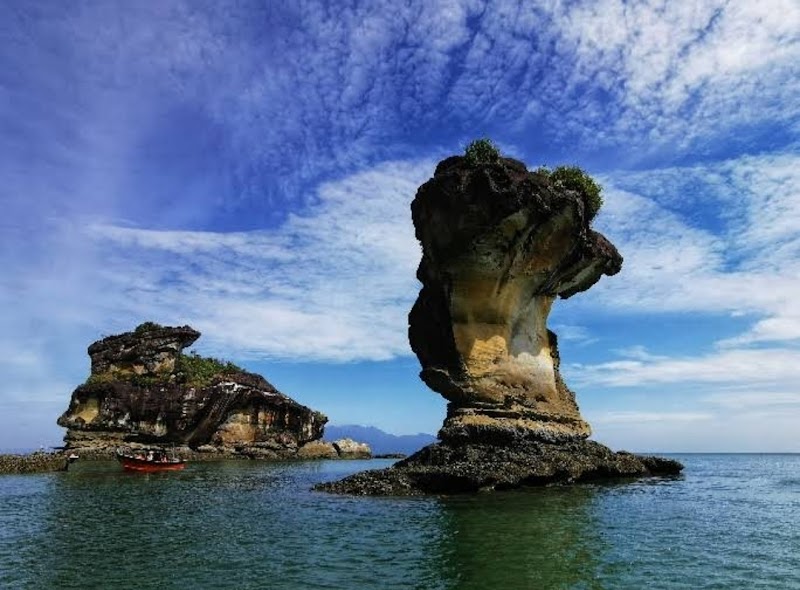Bako National Park is a top destination for jungle trekking near Kuching, Sarawak, where dense rainforest trails lead to encounters with rare proboscis monkeys and fascinating carnivorous plants. This practical guide outlines what to expect, how to prepare, and what makes this adventure uniquely rewarding.
Start Early to Beat the Heat
Begin your trek at dawn for cooler temperatures and better chances to see wildlife before midday rest periods.
Wear Sturdy, Waterproof Footwear
Trails can be slippery with mud and exposed roots. Proper shoes provide grip and protect your feet throughout uneven terrain.
Hydrate Generously
Bring at least two liters of water per person, as humidity and exertion quickly dehydrate the body during jungle treks.
Use Insect Repellent
The tropical rainforest is home to mosquitoes; applying repellent reduces discomfort and risk of bites without disturbing your experience.
Into the Wild: Jungle Trekking Bako National Park to Spot Proboscis Monkeys and Carnivorous Plants
Bako National Park, located just a 40-minute drive and subsequent boat ride from Kuching, Sarawak, offers one of Borneo's most accessible yet thrilling jungle trekking experiences. As you step onto the forest trail, the dense greenery presses in like a living wall, each leaf and branch humming with the pulse of the wild. The trails here range from gentle riverbank strolls to steep climbs where the jungle dares you to keep pace with its rhythm. Your goal: to spot the elusive proboscis monkeys with their bulbous noses and the bizarre carnivorous plants that dangle their traps along the path.
The most popular trail for seeing proboscis monkeys stretches 3.2 kilometers through mixed dipterocarp forest. Elevation gains are moderate, around 150 meters, with terrain that shifts from soft earth to patches of slippery roots and occasional muddy sections after rain. These challenges demand solid hiking shoes and alert footing. The forest canopy filters light in patches, casting an emerald glow that glints off leaves coated in humidity. Birds chatter overhead, frogs croon from the shadows, and every now and then, the chatter and splash of monkeys breaking a branch serves as nature’s alarm.
Carnivorous plants, especially pitcher plants, cling to tree trunks and rocks along shaded slopes here. These plants, with their curved tubes and enticing fluid, demonstrate nature’s fierce self-reliance, thriving in nutrient-poor soil by capturing insects. Observing these odd plants offers a rare glimpse into the jungle’s complexity.
Prepare for your trek by packing adequate water—at least two liters per person—and moisture-wicking clothing to manage the heat and humidity. Early morning is the optimal time for spotting wildlife before midday heat sets in, when the forest feels most alive yet remains manageable. A compact camera with a good zoom, insect repellent, and a rain poncho will keep you ready for shifting conditions.
While Bako presents an immersive adventure, respect for its power is vital. The jungle is fiercely itself: unpredictable, vibrant, and demanding of care. Follow marked trails, keep noise low to not startle wildlife, and tread lightly on the earth.
This trek provides more than just views: it’s a dynamic interaction with a forest that lives and breathes around you. For adventurers prepared to engage practically and attentively, Bako National Park offers a jungle experience rich in life, challenge, and discovery.
Nearby Trips
All Adventures
Boat Charters
Water Activities
Adventures near Kuching
Discover the unique and memorable adventures that make Kuching special.
Frequently Asked Questions
How difficult is the jungle trek in Bako National Park?
Trails vary from easy to moderate difficulty, with some sections having uneven, slippery terrain and moderate elevation gain up to about 150 meters. It’s suitable for casual hikers with good fitness and proper footwear.
When is the best time to see proboscis monkeys?
Early morning hours, shortly after daylight, are best for spotting proboscis monkeys when they are most active near riverbanks and forest edges.
Are guided tours necessary for jungle trekking in Bako?
While some trails can be explored independently, guided tours enhance safety, improve wildlife spotting, and provide valuable context about the park’s ecology and history.
What kind of wildlife besides proboscis monkeys can I expect to see?
You may encounter long-tailed macaques, silver leaf monkeys, monitor lizards, diverse bird species, and various insects including unique carnivorous plants.
Is Bako National Park suitable for family outings?
Yes, some of the shorter and easier trails are family-friendly, but supervision is needed due to uneven terrain and wildlife presence.
What are the environmental rules to follow when trekking here?
Stay on marked trails, avoid feeding wildlife, carry out all trash, and use eco-friendly insect repellents to protect the park’s delicate ecosystem.
Recommended Gear
Waterproof hiking shoes
Protect your feet during wet and muddy trail sections while providing necessary grip.
Lightweight rain poncho
Spring rains can come suddenly; a rain poncho keeps you dry without overheating.
Insect repellent
Protects against mosquitoes and other biting insects common in tropical jungle environments.
Compact hydration pack
Allows easy access to water, critical to staying hydrated throughout the humid jungle trek.
Local Insights
Hidden Gems
- "Telok Paku beach offers serene coastline views with fewer visitors and tide pools to explore."
- "Mangrove trails near the park entrance reveal crabs, mudskippers, and unique bird species."
Wildlife
- "The rare silvered langur, a shy primate, can sometimes be seen in dense forest patches."
- "Unique pitcher plants trap insects, a fascinating survival method adapted to nutrient-poor soils."
History
"Bako was Sarawak’s first national park, established in 1957, serving as crucial conservation ground for Borneo’s wildlife and forest ecosystems."
